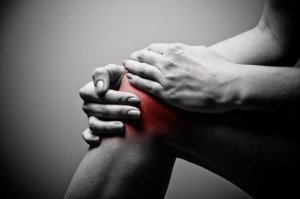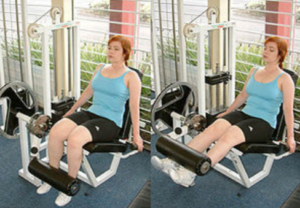
A physically fit person who regularly works out should not have recurring or chronic knee pain.
• Do you have a dull but annoying ache just underneath your knee cap?
• Does it worsen after jogging or going up a flight of stairs?
• Does jumping bring it on?
• Do you especially feel it when you lock out your knee?
• Do you feel the pain when you sit on the floor, leg straight out in front, and press your hand down on your knee cap?
• When you bend your knee, do you hear it “grinding”? Do you feel a grinding sensation?
What IS this knee pain from?
You just may have chondromalacia petalla, a fancy name that means wearing down of the cartilage underneath the kneecap. It’s common in those who engage in jogging, running and jumping activities.
Wear and tear from such activities causes the cartilage to soften up. It then breaks down, causing irregularities along the joint surface, says Michael A. Schwartz, MD, an orthopedic surgeon with White Plains Hospital Physician Associates in NY.
“I usually describe to patients that normal articular cartilage is like the Teflon coating of our pots and pans, as it allows for the smooth gliding of our joint surfaces as we move them,” explains Dr. Schwartz.
“The condition of chondromalacia is similar to when the ‘Teflon coating’ wears off, and the gliding is less smooth.” This condition can affect other joints, but is most common in the knee joint.
“It can occur in younger, otherwise healthy and athletic people when the articular cartilage softens in response to excessive pressure on the cartilage. Running and other joint-loading activities are often implicated.”
When I was 17 I was running toward a base in a softball game, and the grass was somewhat slippery from a previous rainfall.
Toward the base, I slipped and felt a slight jamming of my knee as my leg locked out. Getting back to my feet, I felt a mild discomfort in my knee.
“Yes, it is correct that chondromalacia usually develops over time, but it can also be precipitated from an acute injury,” says Dr. Schwartz.
“During such an injury, opposing cartilage surfaces can impact, or bang against each other, which undoubtedly causes some type of damage to the lining articular cartilage.”
Can knee cartilage grow back?
“The worn-down cartilage cannot grow back and become smooth again,” says Dr. Schwartz.
“But the exercises [knee extension] strengthen the surrounding knee muscles, which can help in alleviating the pressure on the cartilage surfaces.”
Recommended Exercise
if you’ve been diagnosed with chondromalacia, you absolutely must make leg extensions and other leg weight routines a permanent part of your life, as guided by your sports medicine or orthopedic physician and/or a physical rehab specialist.

Leg Extension
Preventing the Knee Pain of Chondromalacia
At first, you’ll need to minimize or even avoid joint-pounding activities, says Dr. Schwartz. Activities that can aggravate or cause the condition include “running, especially on hard, unforgiving surfaces, squatting, kneeling, stairs and hill running.
“If one likes to do these activities for their conditioning, I always recommend cross-training or varying one’s sports. With this, running should be alternated with swimming, elliptical machine work, bicycling, etc.”
Other factors can influence prognosis, such as if you’re overweight, and what kind of other exercises or cross-training you do.
Over time, as the knee’s surrounding soft tissue becomes stronger, it’s reasonable to expect a full absence of chondromalaciar discomfort. Other sports that can bring it on are soccer, lacrosse and field hockey.
Beginning Rehab Exercises
If you’ve never done leg extensions before, and you have this knee problem, then find a chair that’s high enough off the floor so that when you sit on it, your feet dangle.
• Straighten the leg with the painful knee so that it is parallel to the floor, but avoid a full lock-out.
• Hold for two seconds and lower.
• Repeat 10 times, three sets, three times daily.
• If both legs have the condition, you can extend both legs simultaneously.
Do this for several weeks, then graduate on to a weight stack machine, using the lightest weight possible.
Gradually increase weight over time, and never quit these exercises even if you reach a point where you can’t even recall when you last had knee pain.

 Dr. Schwartz
Dr. Schwartz






















